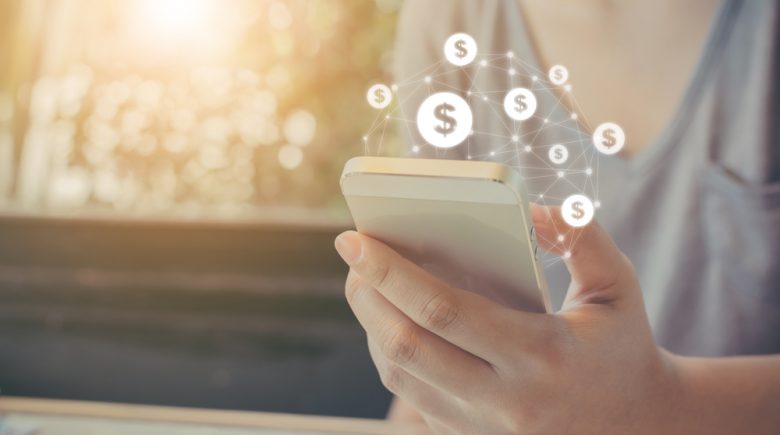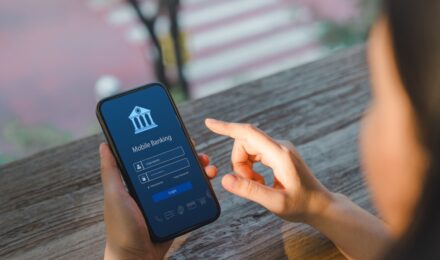E-commerce continues to grow everyday as sales in brick-and-mortar stores decline every year. Customers find it easier and convenient to shop online. Besides, the can easily enter online stores and compare prices. Also, shopping online only takes a few clicks, thus customers need not take a lot of time out of their busy schedules. As a result, most sales and profitability in offline-shops has decreased drastically- forcing some retailers to close down their outlets.
Having realized this trend, brick-and-mortar retailers have decided to fight fire with fire. They are now using technology to entice shoppers to offline stores and convert sales. Here are some of the technology strategies that offline retailers are using to achieve this.
#1 Smart Fitting Rooms
These are fitting rooms with digital mirrors that change between mirror and display modes. Once customers switch to display modes, they can request for a different color or size of the outfit. Also, they can request for another choice of outfit or complementary items such as shoes, belts, and jewelry. This is achieved by scanning items’ barcodes on the digital mirror and storing them. This allows customers to makes request from staff on real time. Additionally, they can use their smart devices to save the outfits that they like best. Mango, a renowned fashion retailer, is one of the brick and mortar stores currently using this strategy.
Smart fitting rooms offer customers an experience similar to digital marketing. They save details of outfits fitted so that customers can review them but not repeat them. Also, like in e-commerce they offer recommendations for alternative outfits or complementary items.
#2 Interactive Kiosks
In an attempt to make offline shopping enticing, retailers are using screens with smartphone and computer capabilities to enhance shoppers’ experience. These kiosks play a number of roles including searching for items and completing pickup and providing shoppers with interesting activities that can be done in the nearing neighborhood.
Retailers achieve success by ensuring that these interactive kiosks are strategically placed and that there many of them so that customers do not have to wait in line to use one kiosk. Additionally, retailers ensure that staff is trained to help customers navigate the kiosk. In turn, these kiosks boost sales by enticing clients and minimizing walk-outs. Also, it helps retailers acquire important data about their customer to aid in the success of future promotions.
#3 Showcasing User Content Next to Products
Research shows that conversion rate, in retail stores, is higher if customers view user-generated content along products. Therefore, retailers today utilize beacon technology and geolocation features to push such information to their customers just when they need it. This allows consumers to access reviews from other customers that have interacted with the same product; thereby allowing them to make informed purchase decisions.
Some of the retailers that have benefitted from this technology include Target and Macy. These companies utilize technology to collect data and identify which products are most sought after on social platforms such as Instagram and Pinterest. They then make an effort to draw attention to these items inside their stores. For example, they include hair shampoo on a pin on tips on how to properly care for your hair.
#4 Use of Branded App
Another way that brick and mortar stores are enticing customers is by encouraging them to launch the store’s app once they are at the store. The app allows them to see the available loyalty credits. Also, it allows customers to view items that they have in the past tagged as their favorites. Additionally, the app gives recommendation to customers based on their preferences and past purchases or to complement items that they purchased in the past. This technology is particularly successful in fashion, electronics, and houseware stores. Customers are also encouraged to pot their purchases in social media. This way, more people are reached.
This strategy benefits the customers in that have the knowledge they need at the tips of their hands. For example, they can check their loyalty points and how to redeem them. Also, they can easily check for discounts and coupons at the store. Finally, customers can scan products using their phone and get information about the product including whether it is in stock or out of stock and nearby store where they can find it. On the downside, infrequent customers might not be too willing to download these apps as they take much space on their phone. However, to reduce the chances of not downloading, retailers are now developing apps so that they allow for online checkout so that customers do not have to waste time waiting in line.
#5 Mobile Point of Sale
Retailers are also trying to entice shoppers to offline stores though Mobile Point of Sale (POS). This is to make the shopping process as easy and as convenient as in e-commerce. Therefore, these store are investing in tablets and smart phones for their employees to use. With these mobile POS, employees can scan for price, check availability of an item, or place an order. This way, they act as a personal shopper and clients are done shopping within minutes. Some of the retailers that currently use this technology include Nordstrom and Lowe.
The main benefit of this technology is the fact that shopping time is reduced. Also, customers do not have to wait in line for their orders to be processed. Besides, the mobile POS can scan credit cards as on checks out. However, this technology also has a downside to it where customers are forced to speedy transactions so they do not have time to rethink their orders.
#6 Providing free Wi-Fi and Charging
Providing free Wi-Fi and charging stations is also one of the common technology practices that offline retailers are now incorporating. Today’s customer likes to use their smart devices to shop or when shopping. Therefore, if they cannot use their phones, they are likely to leave. One way of keeping customers happy is proving free Wi-Fi. However, retailers need to ensure that the Wi-Fi is secure. Also, they can use other tools such as Beacons along with the Wi-Fi. This is to allow them to collect information the customers and to tailor services and product recommendations. Additionally, some stores have found it beneficial to have charging stations so that customers can continue using their phones even when charging. Furthermore, the Wi-Fi is no good if a customer’s phone is off.
Bottom Line
Retailers can make the most out of technology and ensure that customers keep coming to their physical store. To do this, they must be willing to give their customers the digital experience. Therefore, brick and mortar businesses who want to make it in this era of digitalization should follow the above strategies. Also, they should be willing to train their employees to interact with these technologies so they know how to respond to customers who might need help. Also, they should collect information using these digital platforms and use this information to enhance customer experience during shopping.
E-commerce continues to grow everyday as sales in brick-and-mortar stores decline every year. Customers find it easier and convenient to shop online. Besides, the can easily enter online stores and compare prices. Also, shopping online only takes a few clicks, thus customers need not take a lot of time out of their busy schedules. As a result, most sales and profitability in offline-shops has decreased drastically- forcing some retailers to close down their outlets.
Having realized this trend, brick-and-mortar retailers have decided to fight fire with fire. They are now using technology to entice shoppers to offline stores and convert sales. Here are some of the technology strategies that offline retailers are using to achieve this.
#1 Smart Fitting Rooms
These are fitting rooms with digital mirrors that change between mirror and display modes. Once customers switch to display modes, they can request for a different color or size of the outfit. Also, they can request for another choice of outfit or complementary items such as shoes, belts, and jewelry. This is achieved by scanning items’ barcodes on the digital mirror and storing them. This allows customers to makes request from staff on real time. Additionally, they can use their smart devices to save the outfits that they like best. Mango, a renowned fashion retailer, is one of the brick and mortar stores currently using this strategy.
Smart fitting rooms offer customers an experience similar to digital marketing. They save details of outfits fitted so that customers can review them but not repeat them. Also, like in e-commerce they offer recommendations for alternative outfits or complementary items.
#2 Interactive Kiosks
In an attempt to make offline shopping enticing, retailers are using screens with smartphone and computer capabilities to enhance shoppers’ experience. These kiosks play a number of roles including searching for items and completing pickup and providing shoppers with interesting activities that can be done in the nearing neighborhood.
Retailers achieve success by ensuring that these interactive kiosks are strategically placed and that there many of them so that customers do not have to wait in line to use one kiosk. Additionally, retailers ensure that staff is trained to help customers navigate the kiosk. In turn, these kiosks boost sales by enticing clients and minimizing walk-outs. Also, it helps retailers acquire important data about their customer to aid in the success of future promotions.
#3 Showcasing User Content Next to Products
Research shows that conversion rate, in retail stores, is higher if customers view user-generated content along products. Therefore, retailers today utilize beacon technology and geolocation features to push such information to their customers just when they need it. This allows consumers to access reviews from other customers that have interacted with the same product; thereby allowing them to make informed purchase decisions.
Some of the retailers that have benefitted from this technology include Target and Macy. These companies utilize technology to collect data and identify which products are most sought after on social platforms such as Instagram and Pinterest. They then make an effort to draw attention to these items inside their stores. For example, they include hair shampoo on a pin on tips on how to properly care for your hair.
#4 Use of Branded App
Another way that brick and mortar stores are enticing customers is by encouraging them to launch the store’s app once they are at the store. The app allows them to see the available loyalty credits. Also, it allows customers to view items that they have in the past tagged as their favorites. Additionally, the app gives recommendation to customers based on their preferences and past purchases or to complement items that they purchased in the past. This technology is particularly successful in fashion, electronics, and houseware stores. Customers are also encouraged to pot their purchases in social media. This way, more people are reached.
This strategy benefits the customers in that have the knowledge they need at the tips of their hands. For example, they can check their loyalty points and how to redeem them. Also, they can easily check for discounts and coupons at the store. Finally, customers can scan products using their phone and get information about the product including whether it is in stock or out of stock and nearby store where they can find it. On the downside, infrequent customers might not be too willing to download these apps as they take much space on their phone. However, to reduce the chances of not downloading, retailers are now developing apps so that they allow for online checkout so that customers do not have to waste time waiting in line.
#5 Mobile Point of Sale
Retailers are also trying to entice shoppers to offline stores though Mobile Point of Sale (POS). This is to make the shopping process as easy and as convenient as in e-commerce. Therefore, these store are investing in tablets and smart phones for their employees to use. With these mobile POS, employees can scan for price, check availability of an item, or place an order. This way, they act as a personal shopper and clients are done shopping within minutes. Some of the retailers that currently use this technology include Nordstrom and Lowe.
The main benefit of this technology is the fact that shopping time is reduced. Also, customers do not have to wait in line for their orders to be processed. Besides, the mobile POS can scan credit cards as on checks out. However, this technology also has a downside to it where customers are forced to speedy transactions so they do not have time to rethink their orders.
#6 Providing free Wi-Fi and Charging
Providing free Wi-Fi and charging stations is also one of the common technology practices that offline retailers are now incorporating. Today’s customer likes to use their smart devices to shop or when shopping. Therefore, if they cannot use their phones, they are likely to leave. One way of keeping customers happy is proving free Wi-Fi. However, retailers need to ensure that the Wi-Fi is secure. Also, they can use other tools such as Beacons along with the Wi-Fi. This is to allow them to collect information the customers and to tailor services and product recommendations. Additionally, some stores have found it beneficial to have charging stations so that customers can continue using their phones even when charging. Furthermore, the Wi-Fi is no good if a customer’s phone is off.
Bottom Line
Retailers can make the most out of technology and ensure that customers keep coming to their physical store. To do this, they must be willing to give their customers the digital experience. Therefore, brick and mortar businesses who want to make it in this era of digitalization should follow the above strategies. Also, they should be willing to train their employees to interact with these technologies so they know how to respond to customers who might need help. Also, they should collect information using these digital platforms and use this information to enhance customer experience during shopping.



